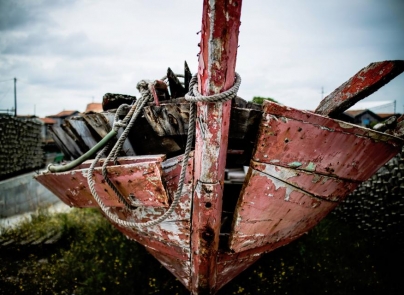The Shocking Case of the Hungarian Galley Slaves – A 17th-century Tale of Religious Persecution

The Shocking Case of the Hungarian Galley Slaves – A 17th-century Tale of Religious Persecution
One of the worst examples of religious persecution in European history happened in the decade between 1671 and 1681, when the Hungarian Roman Catholic authorities determined to eradicate Protestantism from their country.
The Sentence
The height of that persecution began in 1674, when the authorities summoned all Hungarian Protestant pastors to a special court in today’s Bratislava, Slovakia. Only those in northern and western Hungary (336 in all) obeyed the call. The rest of Hungary was under the Ottoman administration, which forbade its citizens to travel to Bratislava.
The attending pastors were charged with rebellion, treason, and defamation of the Roman Catholic Church. They were sentenced to death, and told they could forego punishment by converting to Roman Catholicism. About two-thirds of them took this way of escape, even if only on paper, and fled to other countries.
In reality, the death sentence was only a threat. Those who refused to convert were taken to nearby Leopoldstadt, where they were imprisoned, forced to perform hard labor, and tortured for about a year. Again, some converted. Many died of exhaustion, cold, hunger, and beatings.
In March 1675, those who stood firm and survived (about 40) were forced to march almost 300 miles south, to the Italian city of Trieste. From there, they continued further south to the port of Naples, where they were sold to the Spanish as galley slaves. Many died along the journey, and only 29 made it to the galleys.
The Liberation
It was a German physician, Nicholas Zaffius, who discovered the abuse of these prisoners during his stay in Naples, and spread the news throughout Europe. “The true Church of God is a dove,” he wrote in outrage, “not a blood-thirsty tiger.”[1]
The news raised a chorus of angry voices, including that of Charles II, the Roman Catholic King of England, who started a campaign to raise funds for the imprisoned ministers – funds which became useful after they regained their freedom. The greatest protest came from the Netherlands, where many Hungarian pastors had studied.
Finally, on December 12, 1675, the Dutch Vice Admiral Jan de Staen was sent to investigate this case. When he arrived in the Bay of Naples, he sent his chaplain to interview the ministers, then reported his findings to Admiral Michiel de Ruyter, one of the most famous admirals in Dutch history.
The prisoners had to wait for orders to travel through the bureaucratic channels. They lost hope when they were told that the Dutch fleet had left the area. But on February 11, 1676, after peaceful negotiations with the galley’s captain had failed, de Ruyter and his men attacked the vessel between Naples and Sicily, boarded it, and personally freed the ministers, who went off singing Psalms 46, 114, 125, and 116.
Refusing to accept the ministers’ thanks (“Give all the glory to God,” he told them), de Ruyter went on to say that, “of all his victories, none had given him so much joy as the delivering of these servants of Christ from their intolerable yoke.”[2] As it turned out, it was his last victory, as he died the following year while fighting the French near Sicily.
The Aftermath
As for the Hungarian authorities, they tried to exculpate themselves by insisting the prisoners were arrested only on charges of rebellion, not for religious reasons. This was denied by the surviving prisoners, including one, George Lanyi, who had escaped while he was taken to Naples and had written an account of the facts, entitled Funda Davidis (David’s Sling).
Further investigations proved that the prisoners had told the truth. On January 22, 1676, Holy Roman Empeor Leopold I (who had ultimate jurisdiction over northern and western Hungary) ordered the reversal of the sentence. Fearing reprisal, the Hungarian bishops added a clause: the former prisoners should not revenge themselves, demand restitution, nor return to their country.
This last clause forced the ministers to look for shelter in other countries. They were welcomed in Switzerland, Germany, and the Netherlands. Some were able to return to their countries in later years, when the restrictions were finally lifted. Today, some of their descendants proudly remember their stories.
[1] Imre Szabad, Hungary, past and present: embracing its history from the Magyar conquest to the present time, Edinburgh: Adam and Charles Black, 1854, p. 417, my translation (from Latin).
[2] János György Bauhofer, Jean Henri Merle d'Aubigné, History of the Protestant Church in Hungary from the Beginning of the, p. 263





